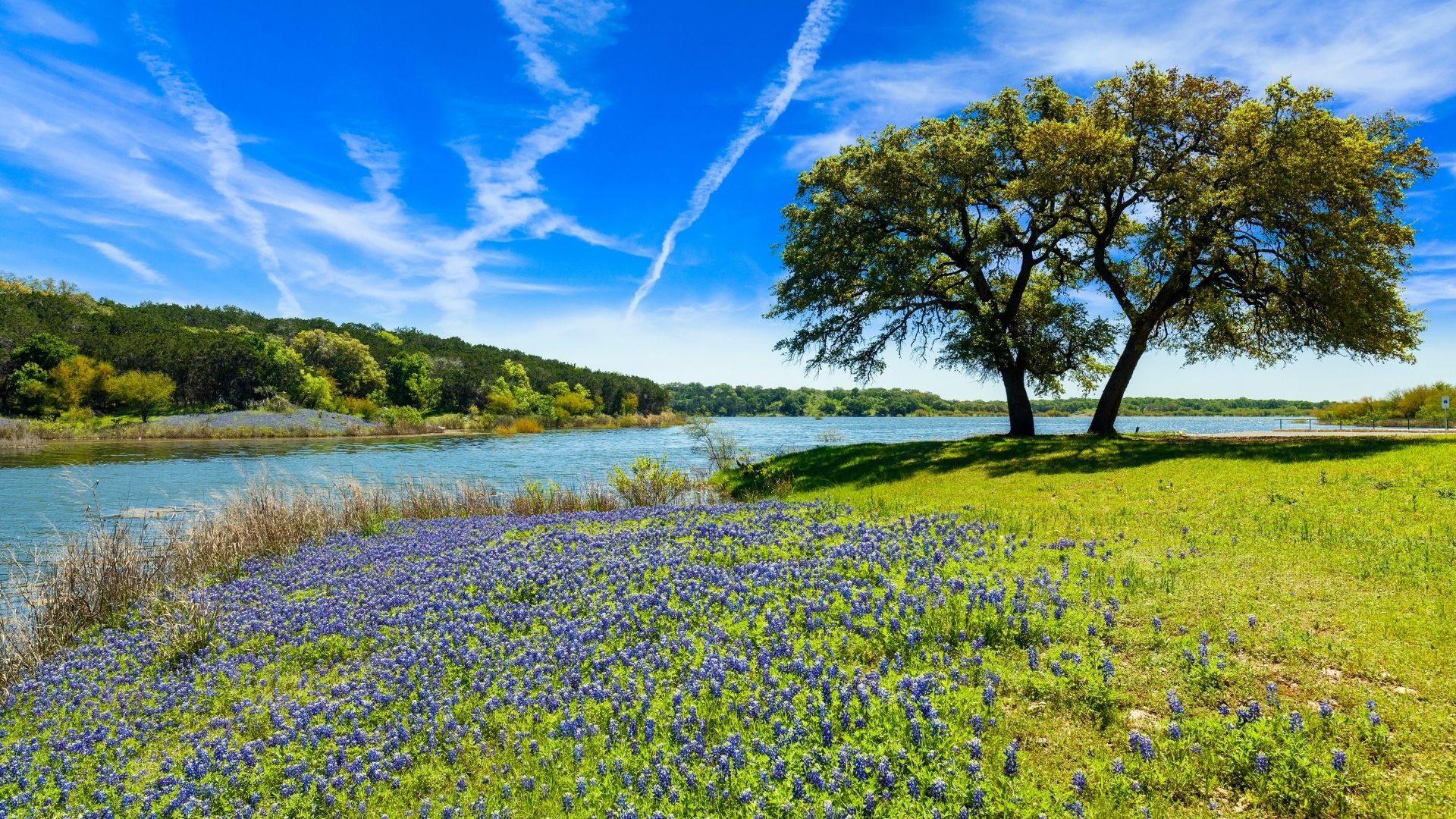San Antonio Weather: What to Expect
Moving to San Antonio can mean trading snow shovels for sunshine & scorching summers – but honestly: the weather here has its quirks, and can be crazy in other ways. Summers bring serious heat and humidity, allergies are a year-round topic, and the Hill Country can deliver some dramatic storms. On the flip side, mild winters and plenty of sunny days make it easy to enjoy the outdoors almost year-round. This guide gives you the honest breakdown of San Antonio’s weather so you’ll know what to expect in every season, and how to prepare for it.

Season Breakdown
San Antonio doesn’t have the four dramatic seasons that you’ll find in other parts of the country — but each time of year here brings its own personality. From blazing summers to mild winters and wildflower-filled springs, knowing what to expect helps you plan your move, your home search, and even your weekends once you’re here. Here’s a breakdown of San Antonio weather season by season.
Summer (June–September)
San Antonio summers are long, hot, and humid — with daytime highs often in the 95–100°F+ range. The humidity can make it feel even warmer, so air conditioning becomes a necessity, not a luxury. Many families cool off by spending weekends at the pool, floating the Guadalupe River, or making quick trips to nearby lakes. Expect higher electricity bills this time of year, but also lots of sunshine and outdoor fun if you plan around the heat.
Winter (December - February)
Winters here are mild compared to much of the country. Daytime highs average in the 60s, and while the occasional cold front can bring chilly mornings, snow is extremely rare. You may see a light freeze once or twice a season, but it’s usually short-lived. Winter is actually one of the best times for outdoor activities — from hiking the Hill Country trails to enjoying the River Walk without the summer crowds.
Fall (October - November)
Fall in San Antonio is short but sweet. The intense heat finally breaks, leaving daytime highs in the 70s and 80s with crisp evenings that are perfect for sitting outside or enjoying one of the city’s many cultural festivals. It’s one of the most comfortable times of year to move, explore neighborhoods, and really get to know the city. Locals look forward to fall because it means patio season is back.
Spring (March - May)
Spring is a favorite season in San Antonio, bringing warm (but not scorching) days, cool breezes, and colorful fields of bluebonnets and wildflowers. It’s also Fiesta season, when the city comes alive with parades, music, and food. The only downside? Allergies. Oak pollen peaks in the spring, making “cedar fever” sufferers from the winter swap one season of sneezing for another.
Honest Realities of San Antonio Weather
While the sunshine is a huge perk of life in San Antonio, there are a few realities newcomers should be ready for:
-
Summer Heat & Humidity: The triple-digit days can be intense, especially if you’re coming from a cooler climate. Most homes are built with central AC, but budgeting for higher summer electric bills is smart.
-
Allergy Season: San Antonio is famous for “cedar fever” in winter and oak pollen in spring. Even people who’ve never had allergies often develop them here. Local pharmacies stay busy during these months.
-
Storms & Rain: Thunderstorms are common in the spring and fall, especially in the Hill Country. They’re usually brief but can be powerful. The good news? San Antonio isn’t in Tornado Alley, and hurricanes usually weaken before reaching us.
-
Endless Sunshine: On the flip side, San Antonio enjoys over 220 days of sunshine a year. That makes it easy to enjoy hiking, biking, or just spending time outside with your family nearly year-round.
Living with San Antonio Weather: Tips for Newcomers
Staying Cool in the Summer
Between June and September, San Antonio’s heat can hit hard. Most locals rely on ceiling fans, blackout curtains, and energy-efficient A/C systems. Outdoor fun is still possible — just shift activities to mornings and evenings, and always keep sunscreen and water on hand.
Beating Seasonal Allergies
San Antonio is famous (or infamous) for “Cedar Fever” in the winter and spring pollen spikes. Air purifiers indoors and daily allergy meds are a way of life for many residents. Choosing the right neighborhood can also help since areas closer to the Hill Country tend to get stronger cedar pollen waves.
Preparing for Storms
While San Antonio avoids coastal hurricanes, strong thunderstorms and flash floods can happen. Most homes are built with this in mind, but you’ll want to check a property’s floodplain status before buying. Keeping a basic storm-prep kit and monitoring weather alerts is standard practice.
Enjoying Mild Winters
January mornings might dip into the 30s, but afternoons often warm up to the 50s or 60s. A light jacket is all most people need. This mild winter climate is one reason many families and retirees choose San Antonio — you get cooler weather without shoveling snow.
☀️ Final Thoughts on San Antonio Weather
The weather in San Antonio is a mix of sunshine, heat, and just enough seasonal variety to keep things interesting. Summers can feel extreme, but the trade-off is mild winters, plenty of outdoor time, and a lifestyle that lets you be active year-round. Once you know what to expect — and how to prepare for it — the climate becomes one of the city’s biggest perks.
Ready to Brave Texas Weather?

Weather is just one piece of the puzzle when relocating to San Antonio. If you’re planning a move here, my free San Antonio Relocation Guide has checklists, tips, and insights that will help you prepare for everything from neighborhoods to home buying.
More San Antonio Relocation Resources
Planning your move to San Antonio? These helpful relocation guides cover everything from choosing the right neighborhood to understanding cost of living, schools, weather, and the full buying process.
Resources & Tools
Moving to San Antonio doesn’t have to feel overwhelming, you just need the right guide. As a San Antonio Relocation Specialist, I’ve helped countless families make a smooth transition into their new homes, neighborhoods, and schools. Whether you’re still exploring suburbs, calculating costs, or ready to start your home search, you’ll find everything you need in these relocation resources. And when you’re ready to take the next step, I’d love to help you make San Antonio feel like home.
